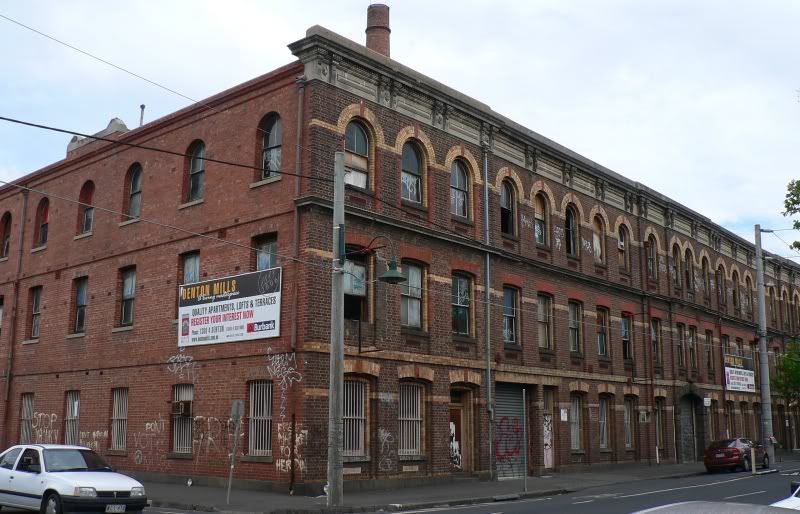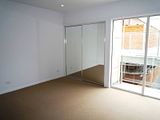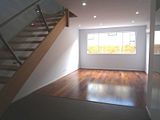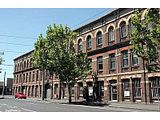The Dentonian
Issue 43
Selected Articles
Greater Manchester Police Museum
Mr. Shaw &the Denton Hat Mills, Abbotsford, Melbourne, Australia
Hating in New Zealand
Letter from Miss Joan Wharton, former Chief Librarian at Denton Library
Lancashire Phrases Quiz
Graeter Manchester Police Museum
Greater Manchester
Police Museum
Newton Street, Manchester M1 lES
Telephone: 0161 856 3287
Fax: 0161 856 3286
Minicorm-.0161 872 6633
Date: 29th November 2002 Your Ref: Our Ref:
Mrs. J. Cronin
Denton Local History Society
Dear Jill
Denton Court Project
I am currently circulating interested parties in connection with our project
to save the Victorian Magistrates Court at Denton and to reassemble it
at the GMP Museum.
This letter is to bring you up to date with developments and also to seek
your society's support for the project in the form of a letter we can
include in our application to the Heritage Lottery Fund.
As you know, the old police station in Denton was built in 1895. On the
top floor of the building is the former Victorian Denton Magistrates Court,
an atmospheric room which retains the original wood panelling, stained
glass windows, a dock for the prisoners complete with wrought iron rails,
witness boxes and a full range of benches, desks and seating for the officials
and the public. I enclose four views of the court for your information.
It is a very valuable example of the local and judicial heritage.
As part of the programme of modernising police premises it is proposed
that the Denton Station will be sold off some time in Spring 2003, which
could mean that this piece of local and judicial history will be lost
forever. However, by a lucky chance, the dimensions of the court room
are almost exactly the same as a vacant upper floor room at the GMP Museum.
This happy coincidence, coupled with the museum's desire to include court
procedures as part of the exhibitions at Newton Street has inspired the
museum to apply to the Heritage Lottery Fund for a grant which would enable
us to carefully dismantle every possible element of the court, restore
it to the original Victorian appearance and then reassemble it as a "room-within-a-room"
in the vacant space in the museum. A great deal of preliminary work funded
by GMP, has already taken place. A specialist contractor has been engaged,
who has undertaken a measured survey of both the court and the location
at the museum, ensuring the court can be accommodated. A full set of drawings,
a proposal for installing the stained glass at the museum and a schedule
of works have all been produced.
We have had an initial visit from Heritage Lottery Fund officers who,
after viewing both the Court and the Museum, said that in principle it
was the type of project that the HLF could fund. However, one of the key
elements in a successful bid would be evidence of support from individuals
and organisations who would use the new court facility. The HLF would
also appreciate some indication of how the new facility might be used
by interested parties.
Therefore, I am writing to ask whether you would be willing to write a
letter of support for our project. We would be grateful for an indication
as to how you might be able to use the facility.
At the museum, we will provide information panels which show the court
in situ at Denton and how the court was brought to the museum. We are
hoping to provide taught sessions about the court, how it functioned and
who took part, and are also looking at reconstructing cases from the Victorian
era (have the Denton Local History Society already uncovered information
about the history of the building or any notable cases that were tried
at the court ? If so, can we make use of that information?).
We also envisage allowing groups to enact cases that they have created
and prepared themselves, or for example facilitating groups wishing to
film their own dramas set in the court and so on.
We are working hard to try and secure funding for the project which we
believe will produce a regionally unique facility and a prime educational
resource. We do hope that you are able to support our project. In order
to achieve a decision from the HLF before the Denton building is sold,
we need to submit our full application before the end of the year. Therefore
I would be most grateful if you could send your letter as soon as possible,
preferably before mid December. Thank you again
Yours sincerely
Duncan Broady
Curator
Mr. Shaw & the Denton Hat Mills
Abbotsford, Melbourne, Australia
 |
Picture Source and further information @
http://en.wikipedia.org/wiki/Abbotsford,_Victoria
Below are some photos and a description of one of the appartments at Denton Mills.
Click to view.
      |
In August I wrote to the Society about my enquiries into the history of one of Melbourne's significant buildings, the former Denton Hat Mills, a building that seems linked to Denton not only by name and product but also by the possibility that its first or one of its first managers, a Mr Shaw, had worked in the trade in Denton.
I had ended my letter wondering if the Society could shed some light on who Mr Shaw was and what the precise connection was between the factory and Denton, knowing, as one does, that the answers are all out there — 'only' time and effort are needed to find them!
My lingering curiosity and a request from Jill Cronin for a photograph of Mr Shaw prompted me to look a bit further.
It seems that our Mr Shaw was indeed the same Mr Shaw who I had found mention of as a local Councillor. His full name was Edward Shaw, and he was the manager of the Denton Hat Mills, as confirmed by a copy of a certificate presented to him 'prior to his departure for England' in about 1891 by then local Mayor Edgar Wilkins.
Now, what about the history of the factory? In Melbourne we have a useful series of 'postal directories' from the nineteenth century. These guides provide alphabetical lists of streets by suburb and for each street a list of residents or businesses. Sands & McDougall's Melbourne and Suburban Directory describes itself as a Street, Alphabetical and Professional Directory and contains progressively more detailed information as the century progresses, even introducing bold type for those who wished in the early 1900's.
As I have related, hat manufacturing was supposedly started on the Denton Hat Mills site in 1874 in a two-storey building shown still surviving in photographs of the Mills in the 1890's. A Melbourne University thesis (Barrett, A. H. B., (1970) The Making of an Industrial Environment. Collingwood Victoria 1851-91) suggests that the factory was a logical development from the fell-mongering, skin-washing and tanning industries that gathered here because of cheap land along the river Yarra, industries that helped create the notoriously squalid living conditions that the area became associated with.
The way in which entrepreneurs forged ahead with industrial projects
is summed up by this quotation from a Councillor who wanted "as many
factories on the Yarra as possible; this would be the only way to make
Collingwood a second Manchester,"(Robert Dehnert reported in The
Observer 6 August 1874).
The directory for 1874 carries very little information about the streets
that intersect at the Denton Mills site (the north-south Nicholson Street
and the east—west Mollison Street). This is not surprising as Melbourne
was only 40 years from first settlement and although the colonial government
had created street and road reserves and sold off large blocks of land,
building was still intermittent. Given the lack of house numbers, names
are listed in order from one end to another.
The 1875 directory, however, lists a Turner and Martin Hat Factory on
Mollison Street, and a Turner, James H, living in an adjoining street.
There is a little confusion in the directory about where exactly on the
street the factory was, but comparing later editions with names common
to both shows that it was indeed at4he site of the future Denton Mills
site. Barrett (1970) confirms that it was Councillor James Hobson Turner,
proprietor of a tannery across the road, who established the factory in
1874. It was claimed to be the first steam powered hat factory in Australia.
A special hatting edition of the Melbourne evening paper, The Star (13
September 1934) claimed that the first felt hat in Australia was made
here in 1878 (perhaps this date is wrong).
Business was reportedly initially slack while the public was being weaned
off imported hats but improved after 1876 under a new manager-lessee,
Thomas Shelmerdine, who, according to Barret, was the son of a Lancashire
hat manufacturer.
Around 1882, Shelmerdine left the Denton Mills (or whatever the business
was then called) to build Collingwood's second hat factory a kilometre
to the north and installing an innovative 20hp gas engine said to be unique
in Victoria. He appears to have been a very innovative businessman, his
Austral Hat Mill becoming the locally well-known Austral Silk and Cotton
Mills.
The 1883 directory is the next one that I have been able to consult.
By this year it was still listing a Shelmerdine, Thomas, Hat Manufacturer
at the corner of Nicholson and Mollison Street, but no still no mention
anywhere of the Denton Hat Mills.
The 1884 directory still does not give house numbers but it is in this
edition that we find Shaw, E, hat manufacturer, listed in a position on
Nicholson Street just to the south of the 1874 building referred to above.
Interestingly, Thomas Shelmerdine is still listed as hat manufacturer
at the same address as 1883. Denton Hat Mills are not mentioned. Could
it be that Edward Shaw was in the process of taking over management of
an established business that was to change name?
The 1892 directory, the next that I can lay my hands on, confirms that by this time 58 Nicholson Street was Denton Hat Mills, with Shaw, Ed. Manager. This reflects the completion of the first stage of expansion from the 1874 building. Shaw, Edward, is listed at 52 Nicholson Street, just to the south of the factory. This is around the time of his presentation from the Mayor referred to above, curiously talking about 'his departure for England' — a business trip?
The 1895 directory is the same as above but in the 1897 directory the entry has changed to - 58, Denton Mills Hat Factory Co Ltd, Shaw Edwd. mngr. Shaw was also still listed at 52.
The entry in the 1902 directory remains Denton Mills Hat Factory Co.Ltd., Shaw, Edwd. mngr. but Shaw, Edward, is now living at 104 Nicholson Street, about 200 metres further north. This tallies with what we know about the expansion of the factory — by this time it had probably required the demolition of Shaw's previous house.
Entries for 1904, 1906 and 1907 are identical to the above.
The 1912 entry is ominous. At what is now Denton Hat Mills Ltd, Felt Hat Manufacturers, the manager is now Frank Taylor. At 104 Nicholson Street we now find not Edward, but Shaw, Mrs. H. Does this signify Edward's death between 1907 and 1912?
In 1919 the company name is as above, with no manager mentioned. At 104 Nicholson Street is (Edward's widow?) Shaw, Mrs. Hannah.
I have heard the Denton Mill referred to as the 'Fayrefield Hat Factory' and indeed The Star in the issue mentioned above, carries an advertisement for what must have been a brand name that has proven to be less memorable Man the 'Denton' epithet.
And so, at least for the time being, Edward Shaw drops out of sight but not out mind.
The Directories I have referred to provide a 'fast forward', if blurred view of changes in this little corner of Melbourne. At a slower pace, it is still possible to walk north from the dignified but time-weary Denton Mills, as Edward Shaw did many times, towards his home at number 104 Nicholson Street (now a factory). Saplings shown in photographs of around 1900 are now mature trees but much of the housing remains in a similar form (and far from being the slums of the past). He might have been distracted from thoughts about orders to be met and new machinery to be bought by glimpses of the magnificent town halt to the west, where an approaching Council meeting would demand his attention. Who knows for sure?
Hopefully council minutes should give us an indication of his views on life and society and a death certificate will probably provide evidence of birth date and place - but this will need more time - and as for how the business came to identify itself with 'Denton' — well, that's the sort of question that local historians will love to puzzle over, none more than those in Denton!
Robert Cooper September 2002
Hatting in New Zeland
The story of a Denton Trimmer who decided to have a change in 1949
So she went with her husband down to London to have an interview to emigrate
to New Zealand, where they were advertising for people to work in the
hatting trade there. She passed the interview and got a position as a
trimmer. Eventually she set sail with her husband. It took them about
6 weeks to get there, going through the Panama Canal, which she says was
very hot and humid, with crocodiles on the banks.
The hatworks was situated in the South of the South Island at Dunedin. New Zealand comprises two islands of North Island and South Island divided by the Cook Strait. So we know now who discovered New Zealand - Captain Cook on his many voyages.
The firm was owned by Ross and Glendennings, a Scottish firm. Studying the map, New Zealand seems to have been inhabited by Scottish people through the years. The firm manufactured all kinds of men's hats, furs and wools. It was no different really than working in Denton, my friend told me.
Eventually, they bought machines from America - Singers. In the 1950s
these machines were in Denton at Moores' and Wilson's and a little later
the Denton Hat Company started using these machines too.
These machines could move the work, but they couldn't come up to the hand
sewing. Ross and Glendenning were only a small firm having only 25 trimmers.
Eventually my friend went working on the machines. The machines consisted of a tacker stitching the bands and bows on the hat. Then a machine for stitching the leathers in. The leathers were all cut to the different sizes and the two edges stuck together to make a round leather to fit the hat.
Her husband had got his type of work at Glendennings as a joiner. So
they spent a few years in the hafting, then they decided on a move up
to
the North Island where the firm had a woollen mill 30 miles out of Hamilton
at a village called Milton. They manufactured woollen blankets and men's
suiting. She tells me the men's suiting was gorgeous; out of this world.
Then she went on inspection for the firm. Eventually, they decided to
come back home after spending 11 years there from 1949 to 1960.
K Dore
Letter from Miss Joan Wharton
former Chief Librarian at Denton Library
Dear Jill,
I was pleased to hear more about Denton today. In the past it was quite
a place, historically, and there were a number of local Worthies.
(Is Fred Adshead still around?)
I started work in the new Manchester Central Library in 1934, when I was 16, and finished in Stockport when I was 60. I did many jobs finishing as a classifier and cataloguer for Stockport computer. Librarianship was a very interesting profession.
I'm now a borrower with North Riding C.C., and get quite good service from them.
Denton is fortunate in having people interested in local history, and I think you are to be commended.
Yours sincerely,
Joan Wharton.
Excerpts from a letter from our member in Faringdon, Oxon, Sue Hyde Fielding.
Our thanks to Sue for the documents she has sent us, " The Queen versus the inhabitants of Denton", letters etc, relating to the upkeep of the King's Highway.
I happened upon these interesting documents back in the Spring. I bought
them simply
because I knew there was a good home for them, and couldn't bear to leave
them on the stall.
The photostat of the Tithe allotments is nothing special. I traced it
once when in
Preston but unfortunately I do not have the matching names for the numbers.
It might be worth an enquiry.
A question please for your next meeting or magazine. Can you ask if anyone
can recall or
4 remember anything at all about the Welcome Brewery, Welcome Inn at Henshaw
Street, Oldham. I know it's off your territory but someone may. It was
owned by Charles Frederick Hyde and Daniel
. Battersby: Run by Arthur James Hyde with Jack Kirby in tow as Asst.
Brewer. It closed in 1957 and demolished in 1959, possibly to make way
for the new Town Hall. Any snippets welcomed.
Cheers for now, Sue.
IF YOU CAN HELP WITH THIS ENQUIRY, PLEASE LET JILL KNOW.
ALSO - Does anyone have any information about the Artillery Camp, between
Denton and Audenshaw, which afterwards became an Internee Camp?? An exiled
Dentonian in Cornwall has asked if we can help. If you can, contact Allan
Arrowsmith. Thank you.